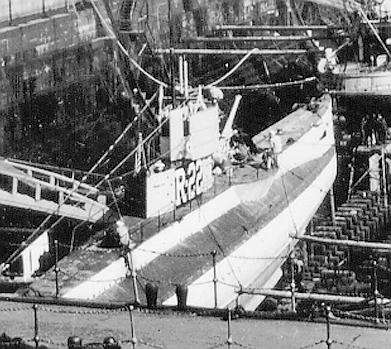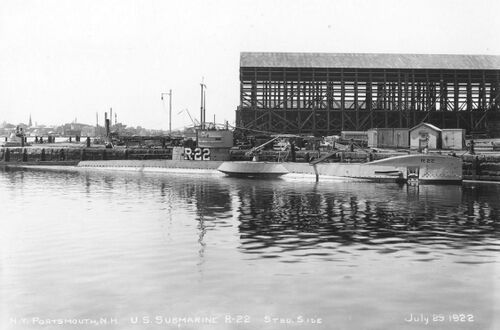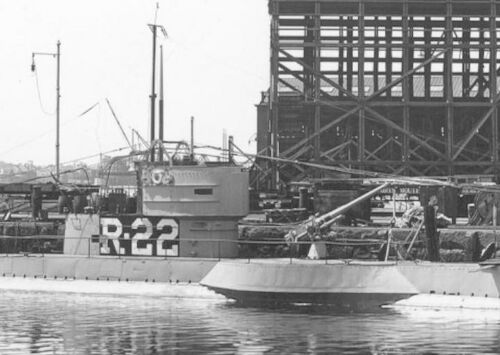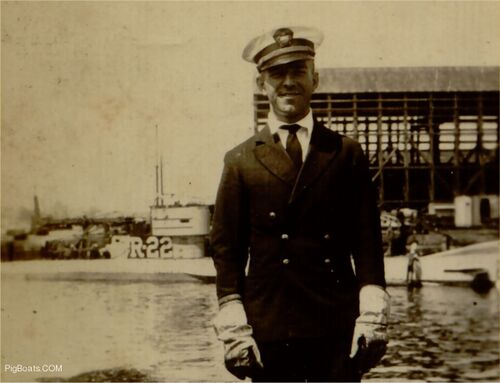R-22

Milne Special Collections, University of New Hampshire Library, Durham, N.H. Used with permission.

U.S. Navy photo.

U.S. Navy photo.

When the 3"/50 caliber Mk 6 gun was added, the narrow deck required that an expanded sponson be added to give the gun crew room to train and elevate the gun.
U.S. Navy photo.

Lieutenant James Joseph Hughes photographed standing in front of the R-22 at Portsmouth Navy Yard on or about July 29, 1922. Hughes was likely assigned to the R-22 when this photo was taken, perhaps as her Executive Officer. He may have been leaving the boat to move on to command of the USS O-9 (SS-70) about two months after this photo was taken. Why he is is wearing heavy work gloves with a dress uniform is a mystery.
Hughes was a prolific submarine commander over the years. He commanded the O-9, the O-13 (SS-74), the O-7 (SS-68), and the R-18 (SS-95).
However, his most notable USN command was a surface ship, the river gunboat USS Panay (PR-5). Hughes and his command was involved in the infamous "Panay Incident" of December 12, 1937. In that action the ship was attacked and sunk by the Japanese on the Yangtze River near Nanjing, China. A direct hit blew Hughes off the bridge and broke his hip, for which he was awarded Purple Heart. As the boat sank the crew made it to shore and hid in the reeds until rescue. His leadership that day was distinguished. The unprovoked sinking of the Panay, nearly four years before Pearl Harbor, very nearly catapulted the U.S. into war with Japan. Rather deft diplomatic maneuvering by both countries, along with a Japanese admission of guilt and charitable gifts of money barely managed to forestall war at that time.
His final command was the cargo ship USS Electra (AK-21) which was torpedoed by the Germans but remained afloat. His efforts to save the ship resulted in Hughes being awarded the Navy Commendation Medal with a Combat V. He was relieved of command on June 23, 1943 and released from active duty due to medical reasons, likely the result of continuing problems from his injuries aboard the Panay.
Photo From Hughes Private Scrapbook, now in the private collection of Ric Hedman. Career data from Wolfgang Hechler and Ron Reeves.
Page created by:
Ric Hedman & David Johnston
1999 - 2023 - PigBoats.COM©
Mountlake Terrace, WA, Norfolk, VA
webmaster at pigboats dot com
